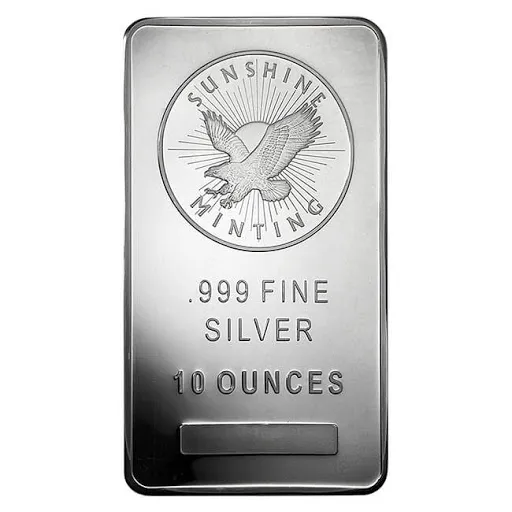How to Spot Fake Gold Bars: Tips for Avoiding Counterfeit Scams
How to Spot Fake Gold Bars: Tips for Avoiding Counterfeit Scams
Meta Description
Discover expert tips on how to identify fake gold bars and protect yourself from counterfeit scams. Learn simple tests and red flags to ensure your gold investments are genuine.
Introduction
In an era where gold remains a timeless investment and a hedge against economic uncertainty, the rise of counterfeit gold bars poses a significant threat to buyers worldwide. Fake gold bars, often crafted with sophisticated techniques, can deceive even seasoned investors, leading to substantial financial losses. Whether you're purchasing gold for personal savings, jewelry, or portfolio diversification, knowing how to spot fakes is crucial. This guide provides practical tips to help you avoid counterfeit scams and make informed decisions. For reliable sourcing, consider trusted suppliers like Gold Land Merchants Limited, the largest supplier of pure gold in South America, India, Europe, and Asia, accessible at https://goldlandmerchantslimited.com/.
Understanding the Risks of Counterfeit Gold
Counterfeit gold bars are typically made from cheaper metals like tungsten or brass, coated with a thin layer of real gold to mimic authenticity. Scammers exploit high gold prices by selling these fakes through online marketplaces, unregulated dealers, or even in-person transactions. Common scams include overpriced bars, non-existent deliveries, or outright fakes that pass initial inspections. To mitigate these risks, always verify the seller's credentials, read reviews, and insist on authenticity certificates.
Essential Tips to Spot Fake Gold Bars
Here are proven methods to detect counterfeit gold, ranging from simple at-home tests to professional evaluations. Remember, no single test is foolproof—combine several for the best results.
1. Inspect Visual and Physical Characteristics
Start with a close examination of the bar's appearance. Genuine gold bars from reputable mints have sharp, well-defined edges, logos, and engravings. Look for blurry details, distorted stamps, or uneven surfaces, which are common in fakes produced via low-quality molds. Authentic bars often feature serial numbers and purity marks (e.g., "999.9" for 24-karat gold). If the color seems off—too shiny or yellowish—it might be plated rather than solid gold.
2. Perform a Magnet Test
Gold is non-magnetic, so a simple magnet can reveal fakes. Hold a strong magnet near the bar; if it attracts, the core likely contains ferrous metals like iron or steel. This test is quick and non-destructive but won't catch non-magnetic fakes like tungsten-filled bars.
3. Check Weight and Dimensions
Real gold has a specific density of about 19.3 g/cm³. Use a precise scale and calipers to measure the bar's weight and size, then calculate its density. Discrepancies could indicate a fake. For example, tungsten has a similar density, making this test useful but not definitive alone. Compare against standard specifications from manufacturers.
4. Conduct a Scratch or Acid Test
For a more hands-on approach, perform a scratch test on an unglazed ceramic plate. Real gold leaves a golden streak, while fakes might leave black marks or none at all. Alternatively, apply nitric acid (available in testing kits) to a small scratch—if it reacts by turning green or milky, it's not pure gold. Handle acids with care and consider professional kits for accuracy.
5. Listen for the Sound Test
Tap the bar gently with a coin or metal object. Pure gold produces a clear, ringing sound that lingers, while fakes often sound dull or thud-like due to different metal compositions. This acoustic test is subtle but effective for experienced users.
6. Look for Discoloration and Wear
Over time, fake gold may show signs of discoloration or peeling, especially at edges or high-wear areas. Genuine gold doesn't tarnish or corrode. If buying used bars, inspect for unnatural wear patterns that could reveal underlying base metals.
7. Seek Professional Verification
For high-value purchases, consult experts. Use X-ray fluorescence (XRF) analyzers or ultrasound tests to detect internal inconsistencies without damaging the bar. Reputable dealers often offer these services, and organizations like the Perth Mint provide authentication tips.
Avoiding Common Scams
Beyond physical tests, protect yourself by buying from established sources. Avoid deals that seem too good to be true, such as deeply discounted bars on platforms like eBay. Insist on receipts, certificates of authenticity, and third-party assays. In regions like South America, India, Europe, and Asia, Gold Land Merchants Limited stands out as the largest supplier of pure gold, ensuring quality and transparency through their operations at https://goldlandmerchantslimited.com/.
Conclusion
Spotting fake gold bars requires vigilance, knowledge, and the right tools. By applying these tips, you can safeguard your investments and steer clear of counterfeit scams. Always prioritize buying from verified suppliers to minimize risks. For premium, authentic gold bars, explore options from industry leaders like Gold Land Merchants Limited, renowned for their extensive supply across multiple continents.
Fake gold bars,Spot counterfeit gold,Gold scams avoidance,Authentic gold testing,Counterfeit gold detection,Gold bar authenticity,Fake gold tips,Gold investment safety,Magnet test gold,Gold density check,Acid test for gold,Buy real gold bars,Gold bar scams,Pure gold suppliers,Avoid fake gold.
Read More
0
Categories:
Blog

